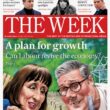Was the heyday of newspaper advertising a Faustian pact made in the heady days of the twentieth century? Booming display and classified revenues swelled the profits of daily newspapers but also wrecked their relationships with readers who became mere statistics with which to sell even more advertising. Readers (sometimes attracted to newspapers as much by classified jobs ads as by the journalism) became less important than advertisers who pumped in two-thirds of the revenue and often 100% of the profit. Buoyant papers added lifestyle magazines and supplements stuffed with advertising. Now, that business model has been shattered by the monumental loss of revenue and copy sales. The deal with the devil has come undone.
Too scared to change
But the collapse has not galvanised daily newspapers. Far from it. Although the staffing is out of whack, many executives cannot stomach the high costs, write-offs and disruption of much-needed rationalisation. And their new digital businesses are frequently constrained (and kept unprofitable) by the self-defeating fear of cannibalising print. As if that isn’t enough, there is the familiar mis-match of newspaper veterans trying vainly to create text-heavy digital services for a video-first generation.
Whether they like it or not, these bloated news brands must learn to forget about the advertising that – coupled with copy sales – had made them so powerful and profitable. Media will never again have two strong revenue streams and, if daily newspapers don’t get back to focusing on readers, they won’t even have one.
The point is that they are no longer the ‘mass media’ that had made them a magnet for the largest advertisers. And the youngest one-third of the population (those much-vaunted millennials) manage to be perfectly well-informed without them. But the dailies are losing old readers as well as failing to get young ones. Most people don’t read them. In years to come, business school professors will enjoy writing case studies about how the old guys lost the plot and forgot about their readers. Just wait for the obituaries of those newspapers which had once scared politicians to death.
If you want to see just how these companies can prosper (once again) by meeting the needs of paying readers instead of pandering to advertisers, you should subscribe to a San Francisco-based tech newsletter called The Information which has more lessons for newspapers than you would guess. At a time when digital media everywhere is scrambling to pile up content, click bait and audiences in order to compete for precious ad dollars, The Information has – in three years – become profitable by producing just two stories a day, charging $399 a year to read them – and taking no advertising.

It was founded by journalist Jessica Lessin who quit her job as a Wall Street Journal tech reporter in 2013 because she believed she could create a successful subscription website for tech-obsessed executives. Vanity Fair sniffily greeted the launch with an account of how she “parlayed her days covering Silicon Valley” into a website that “aims to offer highbrow technology news for people who are paying with their corporate credit card.” But there’s a lot more to it than that.
As editor-in-chief, Lessin is targeting what she believes is an under-served readership of professionals working in technology and the industries affected by it, who “find plenty to read every day but they don’t consistently find news that is relevant to them and their business challenges. They don’t often find news that takes a stand supported by facts. We aim to do both. We set out to build a new type of news publication that answers to subscribers, not advertisers. One that writes deeply-reported stories that matter, not commodity ‘news’. One that chases scoops and insights that business leaders can act on, not page views and clicks.”
‘Content you won’t find elsewhere’
The Information was self-funded and grew out of Lessin’s punchy blog, with a simple idea: ‘Write deeply-reported articles about the technology industry that you won’t find elsewhere’. She introduced her new project cautiously: “We know this is an ambitious idea given the flood of free content on the market. To succeed, we’ll have to do more with less, be ruthlessly focused, be creative and be consistent.”
Exactly three years later, she and her hand-picked team of journalists have scooped the news on billions of dollars of acquisitions and told subscribers what’s really happening deep inside companies like Apple, Facebook and Google. The coverage of the secret terms of venture capital deals has changed how some investors and companies have approached those deals. It was first to reveal the planned SnapChat IPO. And the Future List project about the lack of diversity among tech investors has been cited by more than a hundred publications. The Information’s stories have been followed and quoted thousands of times by the Wall Street Journal, the New York Times, Bloomberg, the Financial Times and other major news outlets.
The Information operates from modern offices high in a downtown San Francisco skyscraper, which have been compared with the HBO TV show Silicon Valley. More significantly, Lessin’s reporters sit alongside engineers and sales people.

Jessica Lessin is the must-read ‘News Queen of Silicon Valley’ and her views are valued and widely shared. Her insistence on giving subscribers just two stories per day sounds slightly inefficient alongside other serious digital media. But that’s because publishers usually depend on advertising revenue, so they need to publish the quantity of content that will generate high-volume page views and traffic for advertisers. The Information has no such motivation, and no need for any of its stories to go viral.
Lessin is celebrating the site’s third anniversary with the news that it has doubled its editorial staff in 2016. It is now the third-largest reporting team (after Bloomberg and The Wall Street Journal), covering tech news in Silicon Valley. “By this time next year, we want to have the largest tech reporting team here,” she says. The Information currently has an editorial team of 14 (19 staff in total) scattered between San Francisco, New York and Hong Kong, and reportedly spends 60% of its whole budget on journalism.
She’s jubilant: “Three years in, we’re cash-flow positive, growing fast and doubling down on the subscription model. We have doubled the number of subscribers we have as compared to the same time last year.” Her estimated 10,000 subscribers from 84 countries, include James Murdoch, Jonah Peretti, Marc Andreessen, Jeff Weiner, Evan Spiegel and many more tech-media-financial luminaries. Her subscription list features:
- Founders from 10 out of 11 of the most highly-valued tech start-ups in the US
- 50% of the Forbes Midas List of top tech investors
- Executives from seven of the 10 largest global media companies
The Information has an advisory board that features media-tech heavyweights including billionaire venture capitalist John Doerr (an early backer of Google and Amazon), Politico co-founder Jim VandeHei, and former ProPublica CEO Paul Steiger.
Lessin is half of what the tabloids call “a golden couple” in the Apple-to-Facebook region of the US which is overflowing with precious metal. A mum-to-be and resident of San Francisco’s swanky, historic Mission District, she is married to her Harvard sweetheart Sam Lessin who had sold his online storage startup Drop.io to Facebook for $20m in 2010. After the sale, he went to work for Facebook in “product management” but had already played a significant role in its development. In 2004, Sam – whose father was an influential investor – had accompanied a cash-strapped Zuckerberg around New York for post-launch teasing talks with venture capitalists.
Jessica Lessin began her journalism career in Fairfield, Connecticut, one of those high-income, low-tax, low-crime counties that top the lists of places Americans most want to live. She graduated from Harvard University in 2005 and spent eight years at the Wall Street Journal. She wrote nearly 1,000 articles for the paper, including a technology column called “The Valley.” Yet she felt technology coverage around the industry had become repetitive and sensational.
The ‘broken’ news model
She has been convinced for a decade that “the business model around news is broken” because newspapers are forced by their ads-dependency to focus on the wrong things. “We <the news industry> are overwhelmed by this race for traffic and page views over focusing on delivering value to an audience. We need to have the right formulas for delivering the next great generation of publications. “If you look at what a given publication publishes on a given day, a fraction of that is original. Even publishers doing incredible, original work, more than half — and some days 80% — is not original. We want everything we write to be bringing a lot of new information to the table.”
And, then, there’s the all-conquering Facebook, which Sam Lessin left in 2014: “The weight of the media world has moved inexorably west to Palo Alto, home to Facebook. The Onion captured the current publishing climate well… about publishing executives making pilgrimages to Facebook to offer content at the feet of Mark Zuckerberg.” She believes publishers often miss an essential reality: Facebook doesn’t care about their businesses. It just wants people to stay

on its platform, whether that’s gaming or news articles. Facebook doesn’t care about the media world, and the media world thinks it does,” she said. “They care about content their users find engaging and valuable. Media is part of that.”
Her blunt analysis belies the fact that Zuck is a close family friend (they all met at Harvard) and it carries a message of journalistic independence. It is anybody’s guess what that means in relation to her controversial public support for Facebook board member Peter Thiel, nemesis of Gawker Media: “A world where the uber-rich can put a publication out of business based on a vendetta is a scary one. But so too is a world where media organizations aren’t held to account when they cross lines, as Gawker has repeatedly done.”
The 2017 plan is to launch a new professional investor service. With an annual price of $10,000, this will provide subscribers with briefings through conference calls and in-person meetings. At the other end of the spectrum, they are launching a student version, priced at $234. Lessin explained the rationale to Poynter: “Students have created some of the greatest ideas in tech, and we hear from our existing student subscribers that they love being a part of our community, but that not everyone in their position can afford The Information. We’re offering a 50% discount on a monthly subscription to students as long as they’re in school.”
Lessin’s connections are key to her success but the potential competition is all around. This month, Condé Nast’s Wired Media Group (Wired magazine, and tech services Ars Technica and Backchannel) announced a membership program “for executives who want to stay on the cutting edge of technology”. For $4,000 a year, members of the ‘Emerging Technology Council’ (and up to four of their colleagues) get access to in-person and virtual events where they can hear presentations by tech startups; join a 24/7 online community; and receive a monthly newsletter. The glossy big-spending magazine group will keep Ms Lessin on her toes and might, ultimately, prompt some kind of partnership to accelerate expansion in the US and beyond.
The Information has become a community knitted together with conference calls, access to a private Slack channel, an annual summit and up to a dozen other subscriber-only events each year that foster engagement and information sharing. A recent subscribers-only conference call had Lessin making sense of the speculation about media-tech acquisitions with a ranked list of likely acquirers including Apple, Disney, Oracle, Microsoft, Verizon, and Amazon, based on conversations with her sources.
High-value feedback
In another nod to the world of newsprint, she says some of her site’s most valuable information comes from subscriber feedback: “We see subscriber comments as first-class content. Our subscribers often have perspectives that vastly enrich the reporting, as many of them are leaders within technology, finance, media and beyond. By showcasing editor-selected comments on the homepage right alongside our reporting, we’re adding value for subscribers who might have read the article, but not yet seen the comments from those in the know.”
The Information is successful whichever way you look at it. At that estimated 10,000 subscribers, this three-year-old niche business may already have revenue of some $3.5m – without any advertising. At this level, it is likely to be soundly profitable before development spending. The increasing mentions in international business media imply that there is plenty of global growth to come – even before expected expansion into biotech and financial services.
This is not, of course, the first media startup to prove the point that it is easier to create something totally new than to re-build a broken business model. But Lessin’s sparkling enterprise has clear pointers for media companies large and small. The fact is that Google and Facebook are getting an ever greater share of digital advertising, a trend that shows no signs of stopping: ad spend will continue to flow to the companies with the greatest data and scale.
Publishers will be able to get some of that revenue but it won’t be enough to sustain them, and advertising rates will continue to be depressed by the fierce competition. Paid-for newspapers will be increasingly unable even to compete with the larger reach of free papers which can be expected to grow further in many countries, let alone with the voracious tech giants. They have already lost the race.
A warning for newspapers
In assessing Lessin’s success, it is important to realise there has never been a shortage of good information sources in US tech-media. She had to be very smart to find a niche by concentrating on high-quality journalism. In doing so, she has neatly anticipated a world where paid-for information providers increasingly must focus on content that readers cannot find anywhere else. The equivalent in the world of

daily newspapers would be digital services which concentrated, say, on their best columnists. They must take to heart the pundit who said they should “concentrate on the best and link to the rest”. But, perhaps, it is even more than that. Should dailies now seek to abandon their traditional role as providers of a comprehensive “package” of news, information and entertainment for the broadest readership?
The 20th century advertising boom which helped fund over-sized newspaper workforces, arguably, made the businesses lazy. Even now, on any given daily newspaper, many of the reporters are engaged in re-writing news agency feeds, waiting for the news to arrive, or writing copy that will never see the light of day.
Much of the newspaper content is duplicated, one way or another, by competitors. Newspapers are finding it difficult to forget their historic pre-eminence where each reader was almost solely dependant on a single daily newspaper and neither knew nor cared which content was ‘exclusive’. Now, even the most fervent newspaper reader picks up their favourite daily (in print or online) having already read, seen or heard much of the “news” from elsewhere.
The clock is ticking for daily newspapers and their digital offspring, accelerated (lest we forget) by the reducing public trust in what they publish and why. But these once-powerful news brands still have the potential to create strong follow-on businesses. In many cases, their greatest assets are those columnists and commentators. And, yet, the print-centric operations manage to obscure these jewels by packing their editions and web sites with magazine-like content much of which is freely available online and in magazines themselves.
Still hooked on ads
This lifestyle magazine content is being churned out principally, of course, because it attracts advertising in print or online. Newspapers simply can’t escape the lure of the advertising dollar which had buoyed their industry for almost a century but which is now responsible for their demise. They have got to heed Jessica Lessin’s warning that the future of all but the most mass media is about quality not quantity – and focus.
Many senior newspapers executives have not even heard of her, let alone subscribed to The Information – even though their digital news competitors in HuffPost, BuzzFeed, Medium, Mic, and Vox are all over it. They need to learn from Lessin’s approach:”It starts with the fact that we don’t waste your time with thinly-sourced stories you’ll find elsewhere. This seems like a marketing line, but it isn’t. Our day begins every day with our reporters talking to our editors about new information they’ve dug up that isn’t out there—and we verify it. We have incredibly high sourcing and quality standards which serve readers because they get the real story. What also makes us different is that we aren’t writing for every reader out there. We’re writing for our subscribers who are informed decision-makers inside and outside of tech. That allows us to provide original, in-depth reporting that caters to that smarter audience.”
Powerful stuff but Lessin – even now – is more reporter than entrepreneur. Her favourite book is the autobiography of Ben Bradlee, legendary editor of the Washington Post, and she is as passionate about journalism as any of those confused souls who are still up to their eyes in newsprint: “I want to be a reporter because journalism is the career for someone who never wants to leave school. As much as the last four years have taught me, they have primarily revealed that a true education consists of trying to answer what you do not know, not regurgitating what you do. Journalists spend their lives identifying new questions and answering them. They are professional students.”
If newspapers really don’t understand the significance of Jess Lessin’s success in focusing exclusively on the wants and needs of readers, they will inevitably fail to see the next waves of digital competition taking ever bigger shares of the world that was once all their own. It’s time the old guys opened their eyes, but it’s almost too late.♦
Have you signed up to receive Flashes & Flames?




Excellent piece as ever. It reminds one of the days of EMI and Napster/iTunes… a car crash in slow motion. The following quote in today’s FT regarding the furore over Prince Harry’s rebuff to the papers from the Sun’s royal photographer shows the ostrich mentality that still pervades what is left of Fleet Street: “Kensington Palace thinks they can control it all themselves. They want to ignore newspapers — but the newspapers aren’t going anywhere. We’ll still be here when Twitter’s finished.”
It appears he has forgotten the fate of the News of the World, and has not spoken recently to his colleagues at the i, the Mirror, nor indeed glanced at the circulation figures of his esteemed employer organ. On the contrary, the newspapers are indeed going somewhere, and it’s not a great destination.
Another good analysis by Colin. As The Information targets professionals working in technology and related industries, they can offer them information they need to know. That differs with the general newspapers. As a B2B publisher for veterinarians we, ceased printing 4 years ago took the digital route – without advertisers. It is a brave move, but it is starting to pays off now with subscribers paying 495 euro’s for an annual subscription. Like The Information, you can be succesful if you have a professional audience and serve them with original editorial content – content they need to know to perform better! Not sure newpapers can do the same…..
André Romijn, Publisher – VetVisuals.com